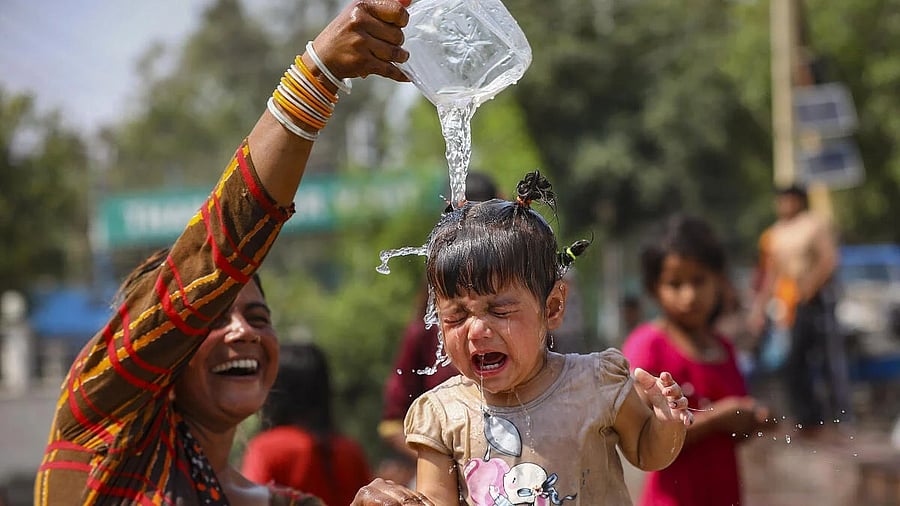
A woman pours water on a child for respite from the scorching heat, on a hot summer day, in Jammu
Credit: PTI Photo
Srinagar: The Kashmir Valley, known for its dry and temperate summers, is experiencing an unprecedented surge in humidity levels this year, adding a layer of discomfort to the already rising temperatures and raising fresh concerns about the region’s climate trajectory.
The unusually muggy conditions are not only causing distress among locals but have also taken tourists—accustomed to Kashmir’s cool climate—by surprise.
Relative humidity in parts of the Valley has hovered over 80 percent for several days, combining with rising temperatures to create a stifling atmosphere more reminiscent of the plains than the mountains.
“It’s not the Kashmir I imagined,” said Bhavna Sharma, a tourist from Delhi, visibly perspiring as she walked through Srinagar’s Mughal Gardens. “We came here to escape the heat and humidity of North India, but it feels like we brought the weather along with us.”
Another tourist, from Chanddigarh, echoed the sentiment. “This is my third visit to Kashmir, and I’ve never experienced it like this. Usually, it’s dry and pleasant even in July, but this time we’re sweating even at night. It’s very uncomfortable.”
While tourists express dismay, climate experts see this as part of a troubling pattern. The increase in humidity, they say, is driven by multiple interlinked environmental changes—accelerated glacial melt in the Himalayas, shifting wind patterns, and altered monsoon behaviour—all pointing to the intensifying impacts of climate change in the region.
“Such humid conditions are not typical for a Kashmiri summer,” said Dr. Yasir Yousuf, an environmentalist. He pointed to glacier melting as a primary cause, which increases local moisture content. “When combined with heat-waves and stagnant air, it creates a perfect storm of climatic discomfort,” he explained.
Dr. Yousuf warned that ignoring these signs could lead to irreversible ecological and humanitarian crises.
Meteorologists at the Srinagar Weather Office confirmed that this summer has been markedly different. “Humidity levels are consistently above normal for this time of year,” an official said. “This isn’t the Kashmir summer we usually report on.”
The discomfort is also affecting health. Kashmir hospitals have recorded an uptick in patients complaining of heat rashes, dehydration, and fatigue. Doctors are advising residents, especially the elderly and children, to stay indoors during peak hours and increase water intake.
Ghulam Mohammad Bhat, a septuagenarian said in his childhood, they would sleep without fans in July. “Now we can’t do without a cooler or AC, and even that doesn’t help with the humidity,” he said.
While a slight dip in temperatures is expected over the coming week, weather officials caution that such fluctuations may become more common and unpredictable. For a region once celebrated for its crisp, cool summers, the new climate reality—humid, hot, and uncomfortable—is setting in fast.